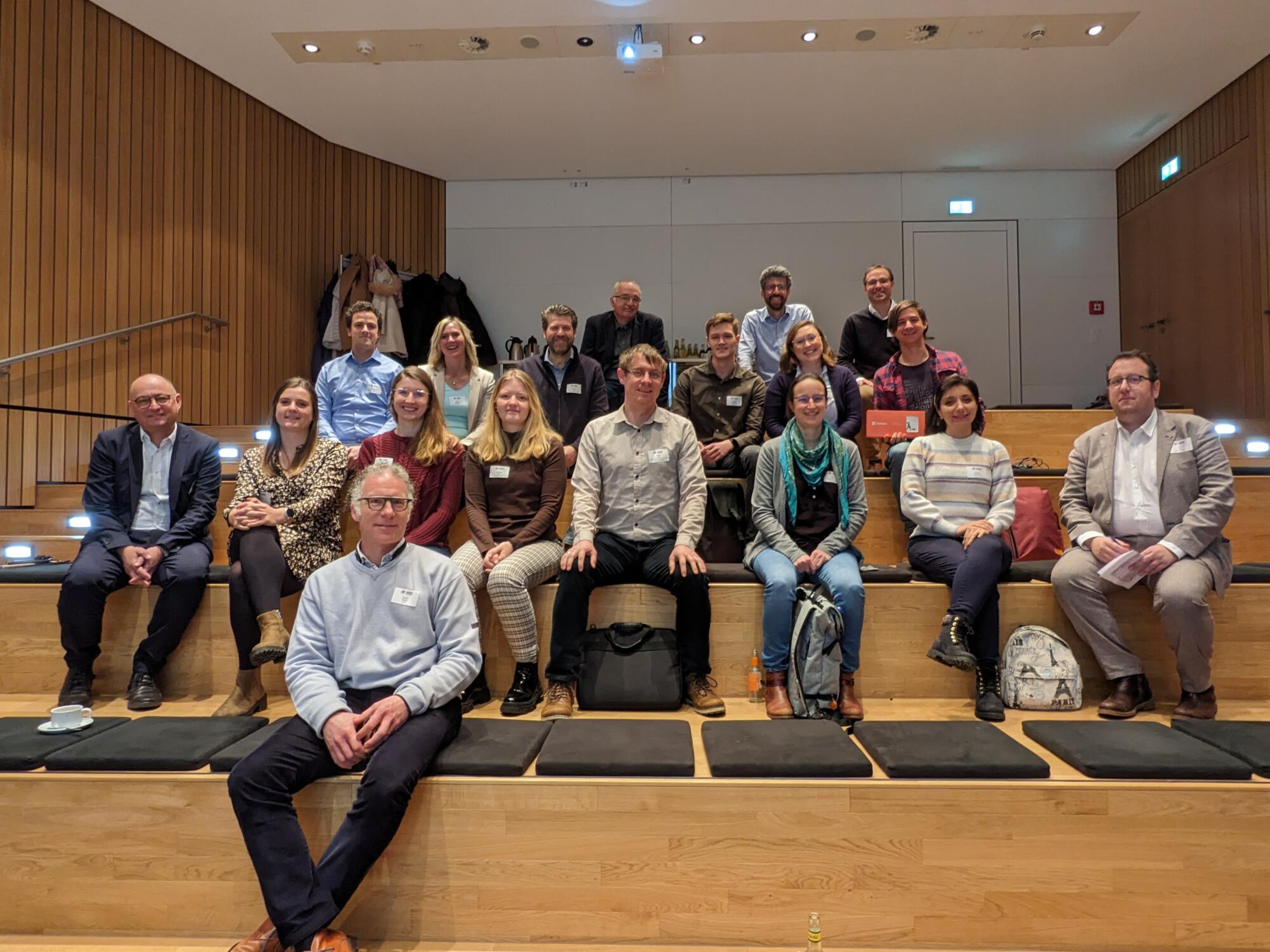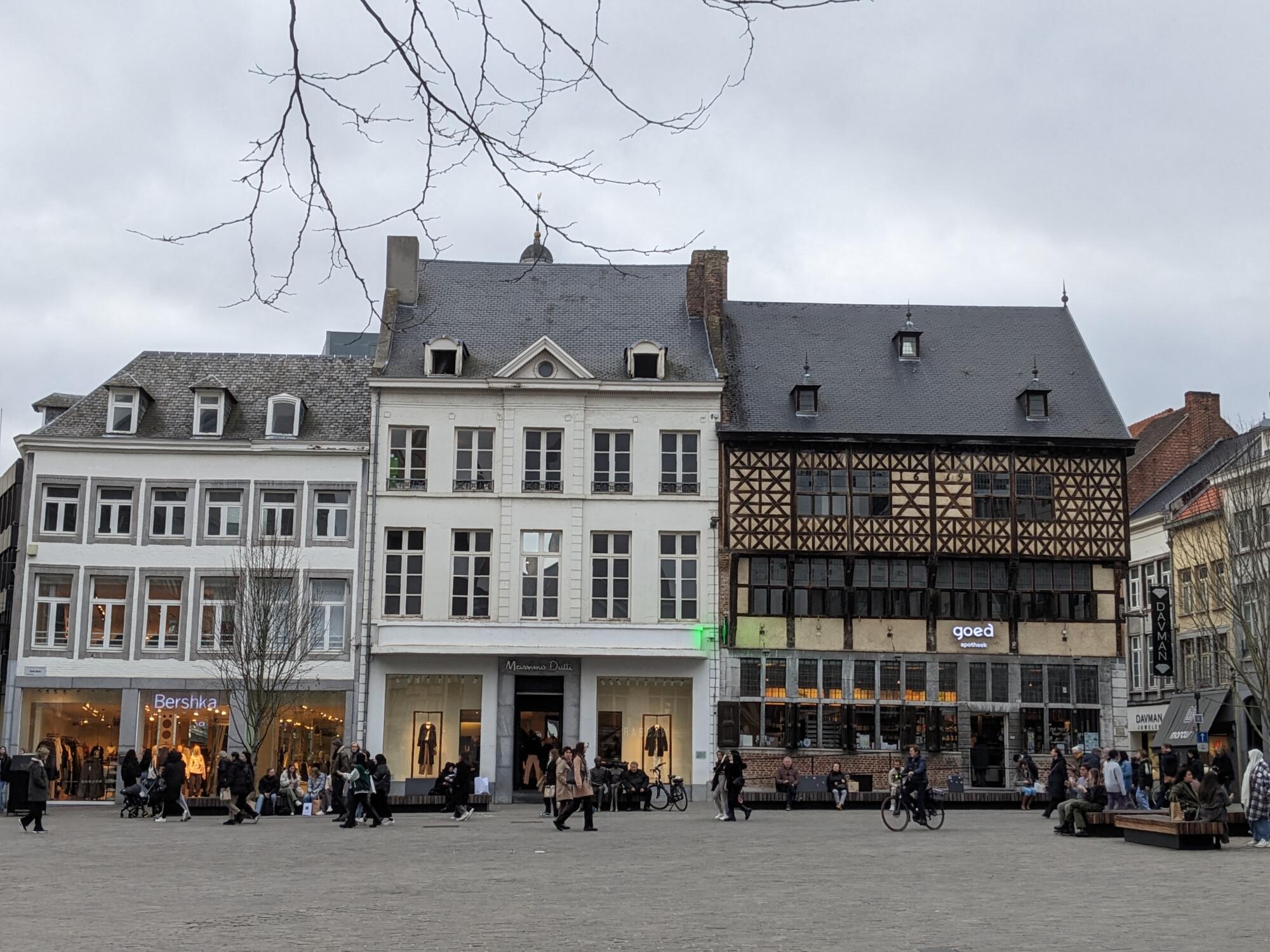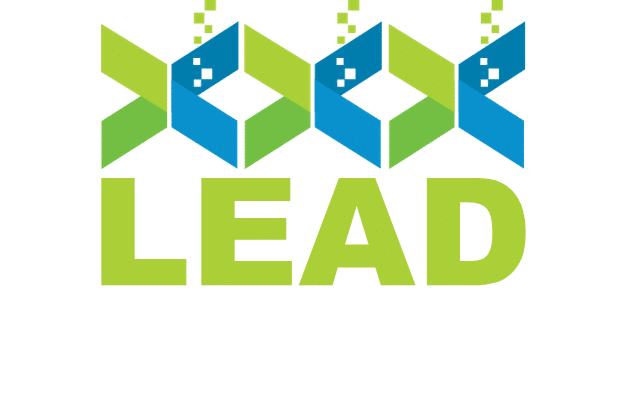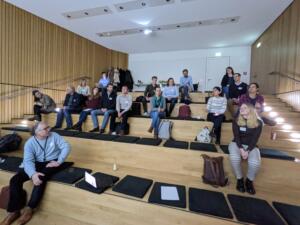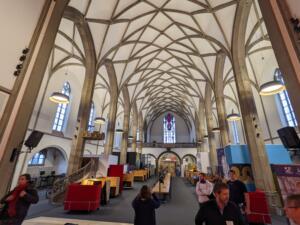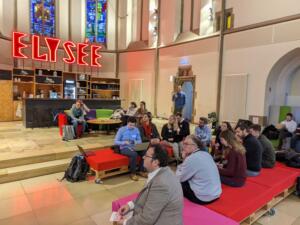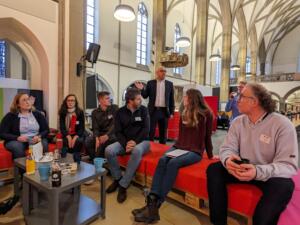'EMR Connect' Workshop series kicked-off strong in Aachen
The Euregio Maas-Rhein (EMR) is a melting pot of different languages, countries and cultures. Borders between the three countries are hardly visible for any visitor of the region, who wants to explore one of several historic cities. Even though socio-political cooperation exists in the framework of the Euregio, urban environments still face similar challenges: limited spaces for active mobility, ongoing digitalisation processes and urban parking.
Many of these challenges were addressed in the first of four workshops that are being organised by Stadt Aachen, Rupprecht Consult and POLIS Network to enhance the cooperation and exchange between mobility experts in the EMR. The kick-off event, which was attended by 24 stakeholders, took place in Aachen.
The event aimed to introduce different mobility stakeholders in the framework of the EU-funded project to foster exchange, which will continue with the next workshop in the Euregio in mid- to late March. Uwe Müller welcomed the guests in all major languages of the Euregio and highlighted that the EMR workshop series will be a keystone for the revitalisation of cross-border exchange and cooperation of experts. The EMR workshop series is based on the Interreg project EMR-Connect, which is led by the AVV, in its position as the mobility agency of the City of Aachen. The host city of Aachen started the workshop on digitalisation, which was moderated by Ivo Cré, with an introduction to the novel solutions that were tested on the roads and in the administrations of the German city.
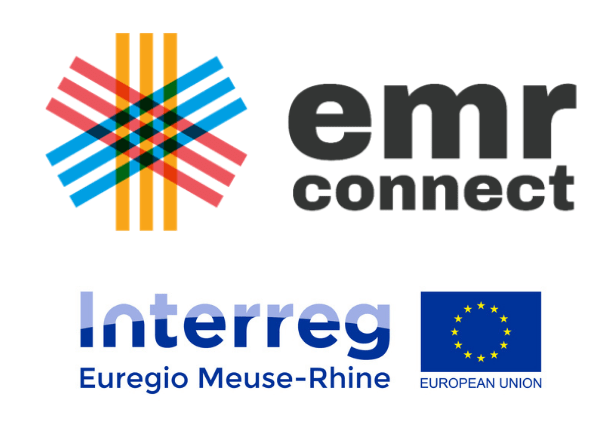
Michael Pielen presented the various digital solutions that were implemented by the City of Aachen to enhance the gathering of traffic data, and register the occupancy rate of parked cars on and off the street. Several of these datasets are combined and displayed in a dedicated publicly available mobility dashboard at verkehr.aachen.de. It is fed with data that is being gathered by sensors from other projects, such as permanent cyclist counting stations, on-street parking sensors and other solutions.
Furthermore, social engagement to nudge citizens is another important solution to promote active mobility across Aachen, thanks to the ‘Aachen Move’ campaign, which encourages citizens to share their active trips to gain ‘Klimataler’ (mobility) tokens. These can be redeemed for discounts in local shops. The data from the generated trips will be used to create trip profiles that will help urban planners. Citizens have also the opportunity to submit road- and infrastructure deficiencies via an app.
Guest speakers from the EMR, such as Christiane Malina from Hasselt and representatives from startups in Aachen presented their innovative solutions and mobility concepts for digital traffic management and city-wide transport planning. Malina shared the ambitious plan of the city in North-East Belgium, which aims to introduce a circulation plan, reduce the impact of passenger vehicles in the city, as well as to create a holistic freight plan to monitor and diminish freight traffic.
Additionally, Kris Vanherle from Telraam and the WeCount project presented a solution that enables citizens to actively participate in a traffic counting project by installing a minicomputer, which is comprised of sensors, a camera and a ‘Raspberry Pi’. Once installed on a street-facing window, it automatically counts HGVs, cars, cyclists and pedestrians with high accuracy. ‘Once citizens are part of the project, they feel enthusiastic to promote change in urban mobility, but they also expect a plan from the city administration to evaluate and utilise the data, which was gathered by them’, summarized Vanherle.
After the lunch break, the participants listened to several start-up pitches from S O NAH GmbH, 4Traffic, Cityscaper, and anny in the DigitalChurch, a start-up incubator that is based in a former protestant church. The start was made by Sinem Atilgan from 4Traffic. Their detector boxes can be adapted to various use cases and collect traffic as well as environmental real-time data. Together with cities and other stakeholders, they work on how real-time data collection can be used to improve our everyday lives.
Next up, Yannik Schwarz from Cityscaper presented how they can visualise real estate projects, tactical urbanism or alteration of street courses, either as a 3D model or even on the side via AR. By making planned measures experienceable for everyone, they take the process of engaging citizens to the next level.
Adriaan Wind from ‘anny’ showed how digitalisation can be successfully brought forward inside an organisation to optimize booking processes. With their solution, they combine various capacity overviews and booking processes in one single platform.
Victor ter Smitten shared the vision of ‘S O NAH’ on digital twins with the participants. Their video-based sensors collect metadata and are currently focused on creating a digital twin of parking spaces, but can also be used to detect traffic jams or monitor large industrial sites, like waste disposal facilities.
Lastly, Rodrigo Tapia presented the use case The Hague of the EU-funded LEAD project. The project aims to create and test a digital twin in 6 cities regarding different use cases for optimising logistics. In The Hague, the efficiency of urban logistics will be increased by connecting different modes of delivery to find the optimal path.
One major conclusion from the presentations and the stakeholder exchange was that data collection is the first step in digitalisation efforts, but a clear vision of what to do with the collected data is even more important. The startups showed various use cases to be explored and tested.
